Sauropodomorpha
- Have very long necks
- Head is proportionately small
- Herbivores with weak cropping teeth
- Enlarged thumb claw
- Generally large to gigantic in size
|
Prosauropoda
- Long necks, small heads
- Bipedal: forelegs smaller than hindlegs
- Paraphyletic
| 
Plateosaurus skeleton, Late Triassic, Europe
|
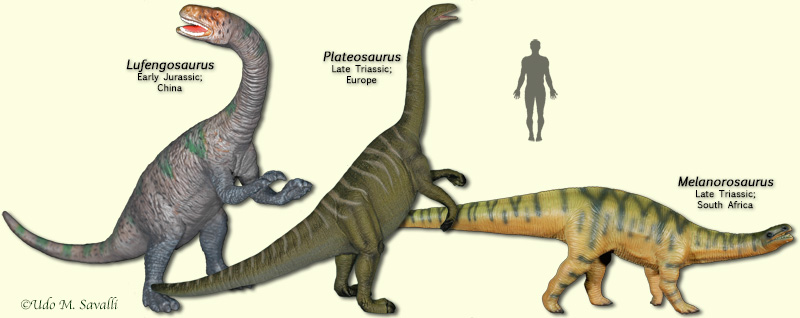
View Larger Image
|
|
Sauropoda
- Necks long to extremely long
- Heads proportionately tiny
- Quadrupedal
- Tails often very long
- Large to enormous sized
|
Basal Sauropods
- Anatomically primitive
- Relatively diverse in general build
- Skulls moderately deep
| 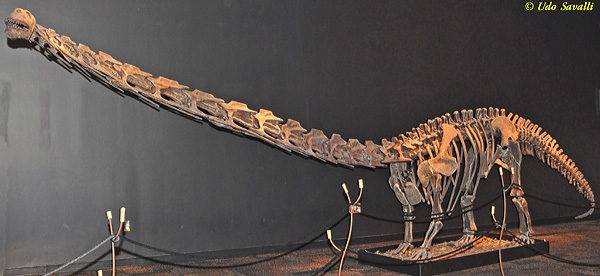
Juvenile Mamenchisaurus skeleton, Late Jurassic, China
|
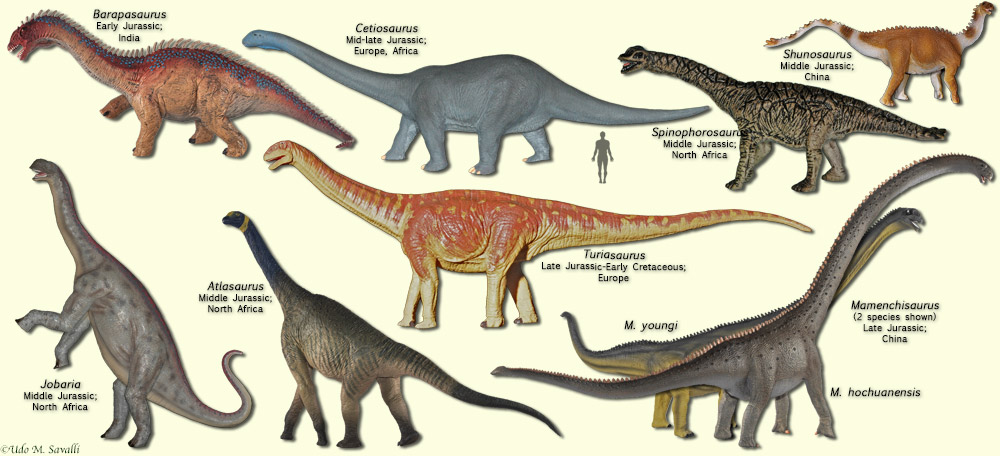
View Larger Image
|
Diplodocoids
- Relatively lightly built
- Many with long necks (but variable)
- Most have very long, whip-like tails
- Spinous process of neck vertebrae are branched, sometimes elongated
- Skulls mostly shallow
| 
Diplodocus longus skeleton, Late Jurassic, western North America
|
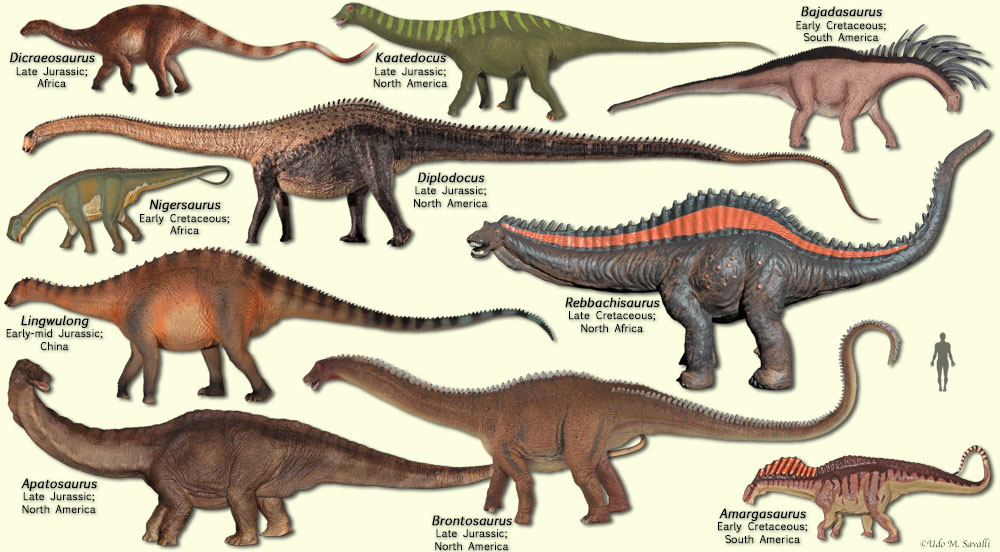
View Larger Image
|
Basal Macronarians
- Relatively heavily built
- Most are tall with elevated necks
- Some have longer forelimbs than hind limbs
- Skulls deep
| 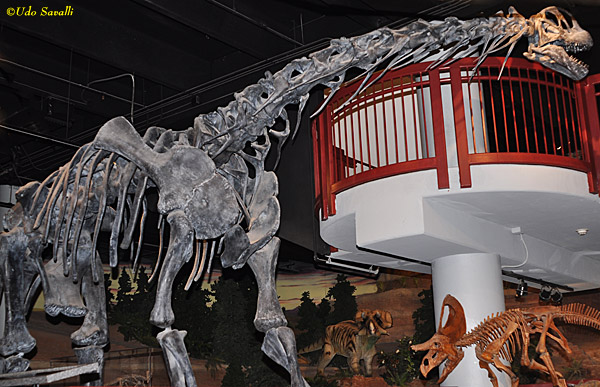
Camarasaurus skeleton, Late Jurassic, western North America
|
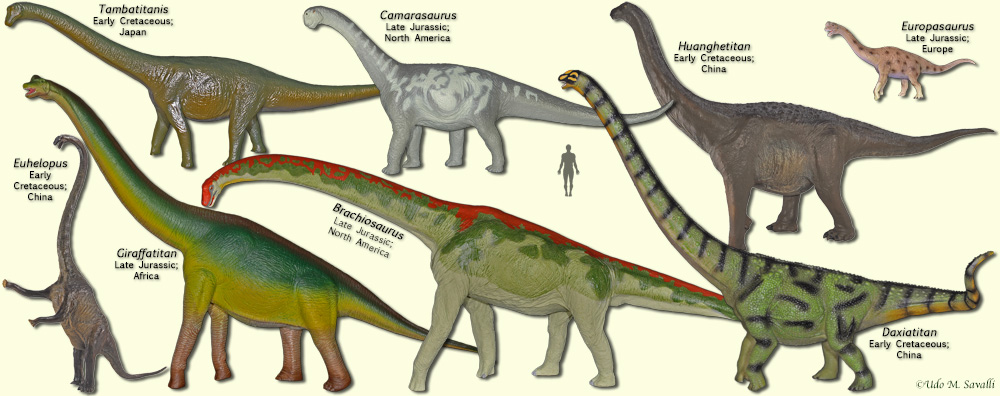
View Larger Image
|
Titanosaurs
- Very large, heavy sauropods
- Bulky, with wide hips
- At least some have dermal armor
- Skulls moderately deep
| 
Patagotitan mayorum skeleton, Late Cretaceous, Argentina (Chicago Field Museum)
|
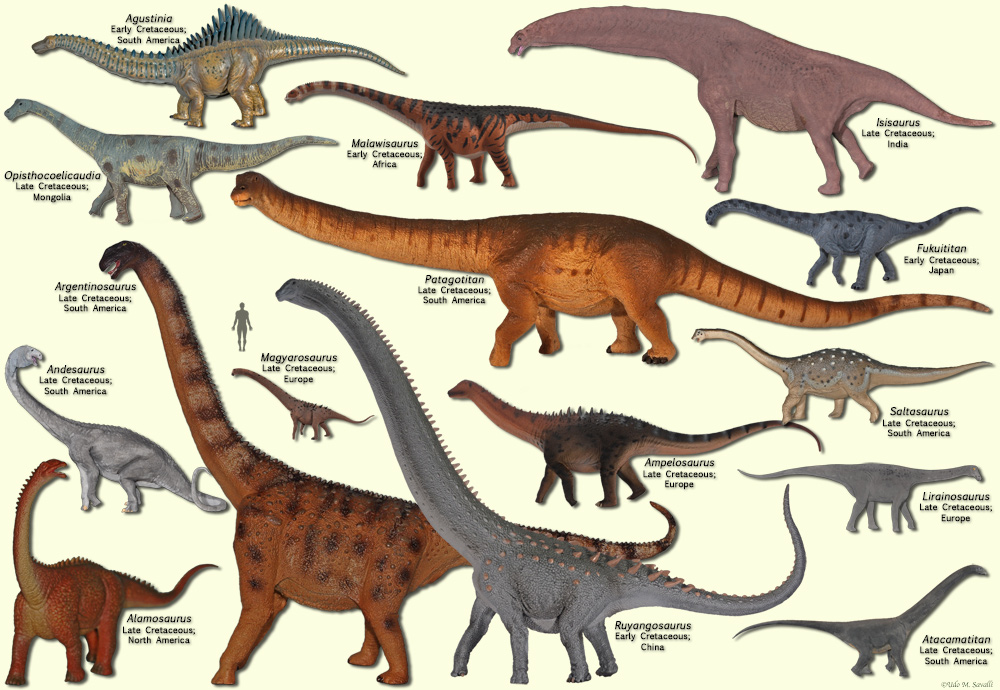
View Larger Image
|
|